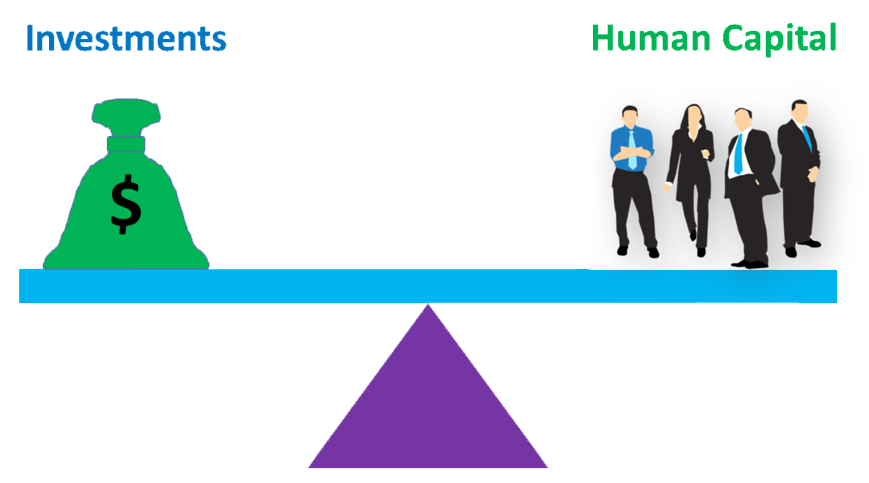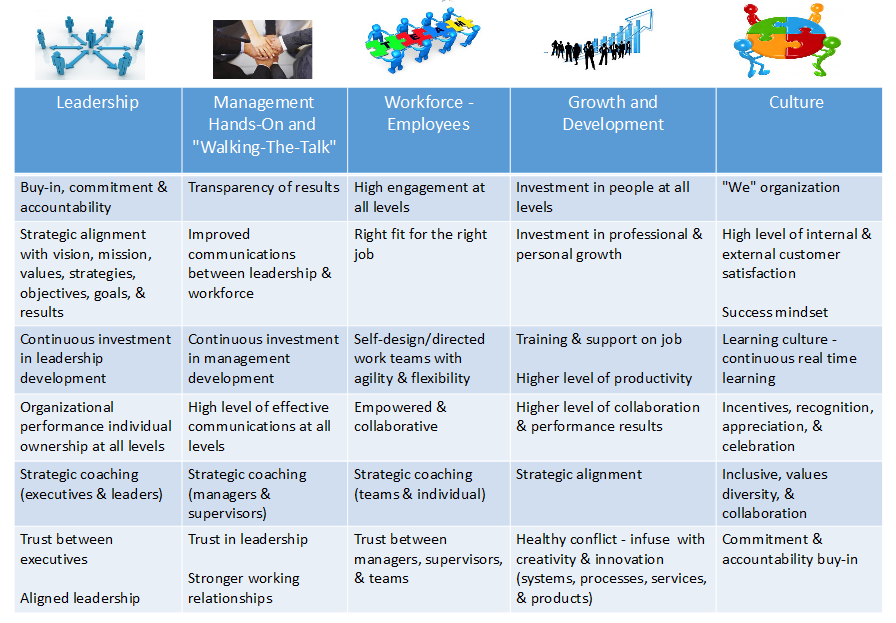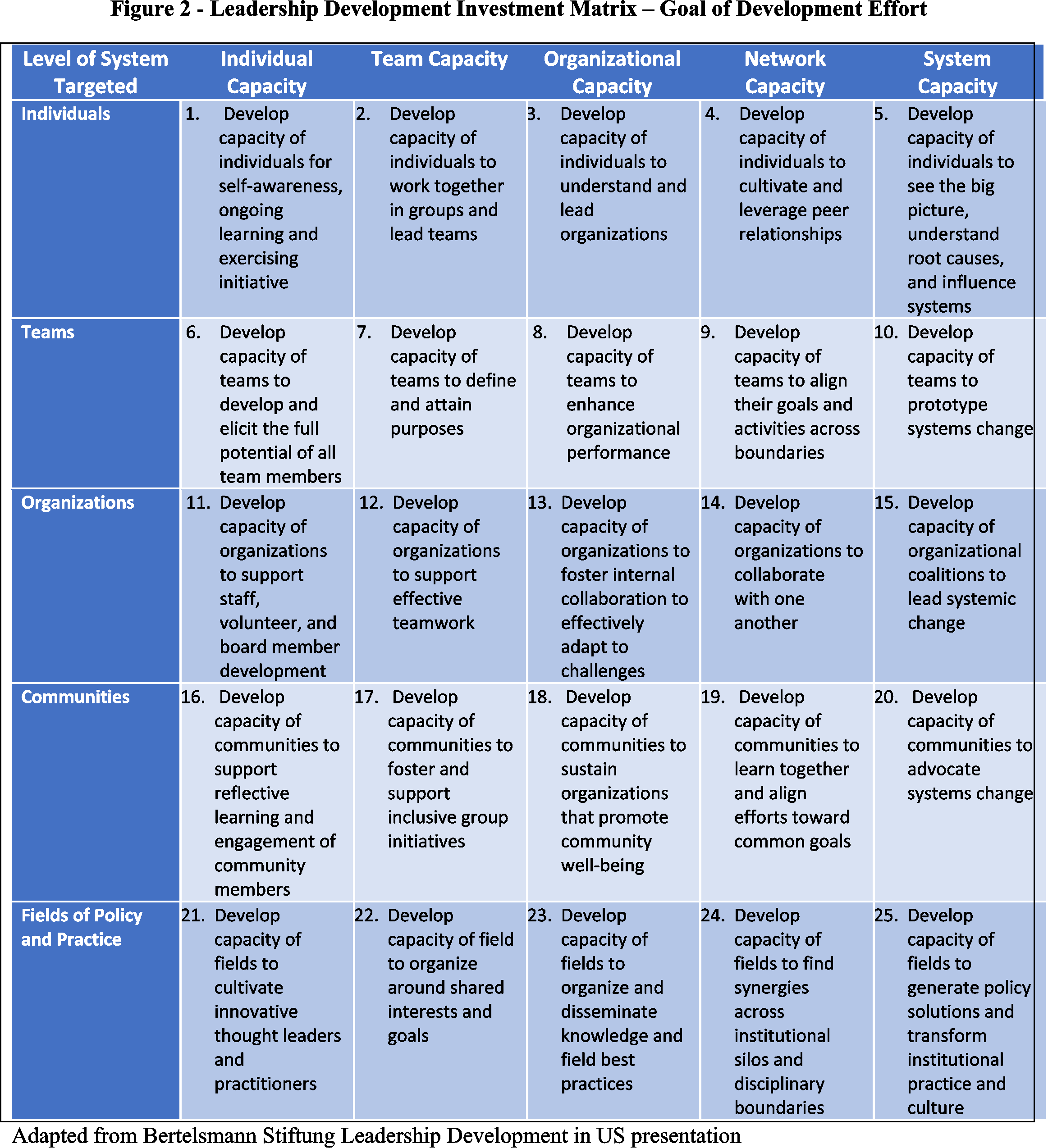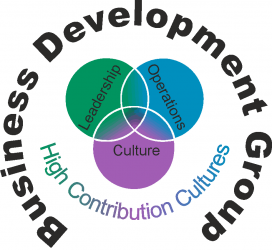
Companies are spending more than $30 Billion in Human Capital and Leadership Development Programs.
Only 13% of executives believe they are doing an excellent job at developing and engaging the workforce at all levels.
Read below to gain insights into these facts from Deloitte’s 2016 study.
Investing in human capital within any organization continues to be a critical issue for all businesses, C-suite executives, and leaders in this time of extraordinary change, which is complex and volatile in an unpredictable competitive environment. According to Deloitte’s study on Human Capital and Leadership Development Spending, companies invested more than $30 billion in 2016.1 Despite more than $30 billion spent globally on human capital and leadership development, only about 13% of companies believe they are doing a good job at engaging their workforce at all levels.
Why should you as a leader focus more on investing in your people at all levels? Because according to Gallup’s 2017 State of America Workplace Study and Research indicates the performance challenge of the 21st century is this – 85% of global employees are not engaged at work. This workplace disengagement has changed very little in the past 15 years. Additionally, current leadership philosophy is not achieving the desired results, and the old practices of management (i.e., annual review, forced rankings, leadership development programs and outdated competencies) are no longer working.
“To win in the marketplace you must first win in the workplace”
Former Campbell’s Soup CEO, Doug Conant
“In an age of disruption, business and HR leaders are being pressed to rewrite the rules for how they organize, recruit, develop, manage, and engage the 21st-century workforce.”
Rewriting the rules for the digital age
2017 Deloitte Global Human Capital Trends
This article provides insights on how investing in your human capital and leadership at all levels can assist in creating a High Contribution Culture (HCC) that leads to higher performance and increase in business results.
Today, executives in the C-Suite often wrestle with questions of where “real value” is being created within their organizations. They constantly ask “What leads to sustainable business growth and leaders’ effectiveness?” Often leaders do not realize the importance and/or value of the role they play. Their behavior affects the organization’s performance and its business results (positively or negatively).
Figure 1 below provides an overview of the strategic framework of a High Contribution Culture that can help executives and leaders in organizations achieve greater success by investing in their human capital at all levels.
Figure 1: Creating A High Contribution Culture (HCC) Strategic Framework

Business Development Group © 2017
“Engaged employees produce better business outcomes than other employees – across industry, company size and nationality, and in good economic times and bad.”
Gallup’s State of the American Workplace 2017 Study
During the past year several companies have encountered issues where leadership misalignment and chaotic culture created fiascoes for the organization, its employees, and customers. A few that come to mind are:
1. Wells Fargo Retail Sales Division – Sales practice abuses where 2 million deposit and credit card accounts were created without customers’ knowledge. Leadership focused on revenues/profits over reasonable practices for the workforce and consumers.
2. Uber – Leadership having a revenue/profit priority over the workforce and a chaotic culture creating significant employees and driver dissatisfaction including allegations of mismanagement, discrimination, and sexism all increasing worker stress and a very dysfunctional environment.
3. United Airlines’ Customer Service where a customer was dragged out of his seat for an airline employee’s use which put company needs above the customer promises.
Wells Fargo’s Retail Sales Division is an example of a culture that was suppressed by the lack of people engagement, poor decision-making, and low employee empowerment. Wells Fargo shows us how things can go awry due to having a culture and working environment with the following characteristics:
A. Putting money above consumers and employees
B. Lack of clarity and buy-in of purpose, goals, objectives, and strategies at all levels
C. Lack of trust and commitment between management, supervisors, and workforce
D. Lack of accountability, transparency, responsibility, and ownership
E. Poor follow-through
F. Abandonment of values and principles
G. People doing things against their morals just to survive
The Wells Fargo Retail Sales Division fiasco is estimated to cost the company approximately $800 million in fines and lawsuits over the next few years.
In 2016, Wells Fargo’s Independent Directors of the Board authorized an investigation to examine the root causes of sales practice abuses and to assess how issues of corporate structure and culture, as well as individual actions contributed to the injuries inflicted upon its customers and extraordinary damage to Wells Fargo’s brand and reputation.
Uber‘s culture and leadership ignored/invalidated feedback and refused to acknowledge severe challenges within the culture such as sexism, discrimination, racism, basic human conflict, lack of diversity inclusion, ineffective policies, and procedures from its workforce. The challenges at Uber escalated after Susan Fowler, a former engineer, left the company and published a blog detailing her experiences with sexual harassment and retaliation at the company. After Susan Fowler’s blog post went viral Uber’s Board of Directors hired an external law firm (the former U.S. Attorney General, Eric Holder and Tammy Albarran who are partners at Covington & Burling LLP) to conduct a comprehensive investigation regarding Uber’s corporate culture and work environment as described by Susan Fowler.
Uber’s investigation supported the allegations raised in Susan Fowler’s blog post, which led to the dismissal of several senior executives, firing of more than 20 employees, and the resignation of the CEO, Travis Kalanick.
Other key recommendations to Uber’s Board of Directors by Covington’s investigation are:
A. The Board should consider incorporating ethical business practices, diversity and inclusion, and other values from Uber’s Business Code of Conduct into its executive compensation program.
B. Use Performance Reviews to Hold Senior Leaders Accountable. Uber should establish key metrics to which its leaders be held accountable in the performance review process. This would include, for example, metrics that tied to improving diversity, responsiveness to employee complaints, employee satisfaction, and compliance.
C. Reformulate Uber’s 14 Cultural Values. Uber should reformulate its written cultural values because it is vital that they reflect more inclusive and positive behaviors. To achieve this reformulation of the values, there are several steps Uber should be undertaken:
i. Restate the values with significant input from employees.
ii. Consider further defining the values in a manner more accessible to and more easily understood by employees.
iii. Adopt values that are more inclusive and contribute to a collaborative environment including emphasizing teamwork and mutual respect, incorporating diversity and inclusiveness as a key cultural value, not just as an end in itself, but as a fundamental aspect of doing good business.
iv. Reduce the overall number of values, and eliminate those values identified as redundant or as having been used to justify poor behavior including Let Builders Build, Always Be Hustlin’, Meritocracy and Toe-Stepping, and Principled Confrontation.
v. Encourage senior leaders to exhibit the values on a daily basis and to model a more collaborative and inclusive Uber culture. Leaders who embody these values should be part of the process of redefining Uber’s values and should be role models for other leaders within the company.
vi. All of Uber’s senior leaders should be responsible for embracing and communicating the reformulated values to employees.
D. Develop clear guidance and guidelines on appropriate workplace relationships, including making clear that any type of romantic or intimate relationship between individuals in a reporting relationship is prohibited.
E. Training at all levels of the organization, starting with Senior Management:
i. Mandatory Leadership Training For Key Senior Management/Senior Executive Team Members. It is also critical that senior leaders receive leadership coaching to model inclusive leadership and address implicit biases.
ii. Training to encourage a culture in which everyone is heard in a manner in which they are comfortable and employees feel safe to propose ideas.
iii. Mandatory Human Resources Training on effective handling of complaints and thorough investigation of complaints of sexual harassment, discrimination, retaliation and record keeping.
iv. Comprehensive mandatory Manager training especially for new and first-time managers.. Training should focus on diversity, inclusion, unconscious bias, communications, effective management, and deliver of feedback.
F. Increase the profile of Uber’s Head of Diversity to demonstrate the company’s commitment to diversity and inclusion. Inclusion focuses not just on the presence of diverse employees, but on the inclusion and engagement of such employees in all aspects of an organization’s operations.
Uber is now encountering more lawsuits based on executives, managers, and drivers’ inappropriate behaviors. These series of events have hurt Uber’s brand, reputation, customers’ retention, market share, and financial results.
United Airlines crewmembers on a flight departed from Chicago’s O’Hare International Airport called Chicago Aviation Security Officers to drag off a passenger who needed to get home to his medical practice in order to make room for United Employees to travel to their next location. United’s past policy was to ask seated passengers to leave the aircraft if they needed the seats. This caused a major PR nightmare for United, and more importantly, the passenger was badly injured.
A video of the incident went viral, the CEO Oscar Munoz sent out a supportive email to all employees stating that the leadership supports the cabin crew’s action and decisions. Well, that did not go well for United and its CEO because he ended up testifying to Congress about airlines customer service, and to the National Transportation Safety Board (NTSB) to explain the event. The consequences of these actions led to brand vilification, reduction of revenues, and litigations.
<p?Subsequently, United and other airlines have changed their policies concerning removing customers and how much money will be offered to them to take another flight. For example Delta Airline is authorizing its supervisors to offer a displaced passenger almost $10,000 in compensation. The previous incentive had been $1,350. Gate agents can offer $2,000.
The above misalignments at Wells Fargo, Uber, and United Airlines have cost the organizations millions of dollars in revenue loss, lawsuits and settlements, lessening of their brand value, and reduction of consumer confidence in the organization’s reputation.
As you think about what you, as a leader, can do to address investing in leadership and your workforce you need to answer the following three questions:
1. What investments do we actually need to make?
2. What are the insights/lessons learned from others who have gone down or attempted the path?
3. How do you create a diverse workforce that reflects the customers you serve (collaboration, innovation, and leading change)?
When we look at “What investments do we actually need to make”, four obstacles can inhibit success with your human capital and leadership development programs:
1. Lack of full commitment to the change process by executives, leaders, and the workforce
2. Lack of trust between leadership and the workforce
3. Lack of accountability at all levels
4. Ineffective, insufficient, and inconsistent communications
In order to achieve a High Contribution Culture (HCC), leadership needs to make a fully committed investment in its endeavor, which starts from the initial formation of thought through to its continuous improvement. Leaders also need to have confidence that initiatives and programs will pay for themselves in the long run. The workforce needs to see what is in it for them – usually some job freedom, personal and professional growth, and the ability to influence their work environment – in other words, the changes should lead to some work- and self-fulfillment.
Addressing the question: “What are the insights/lessons learned from others who have gone down this path?” shows there are overarching needs for change and sustainability that requires a commitment to the effort. Current research is showing:
- Executives and non-executives are mostly trained for the job on the money aspects – not on the people, or it may be they just do not value their people. Tradition decision-making is usually money over people, which will lead to the same disastrous results!
- Employee engagement is not taking hold due to lack of leadership and workforce buy in and commitment.
- Those who have a type of High Contribution Culture out-perform many of their competitors who do not embrace an HCC.
- Segments of leaders and employees do not necessarily like or want an HCC due to the responsibility and accountability aspects.
- Employees want a HCC so they can be responsible, accountable, and contribute more to the organization.
Insights from working with CxO’s reveal many interrelated emerging components that lead to creating desired business results, goals, and success. Basic components include such areas as:
- Focusing on the whole picture – people, culture, process, and finance
- CEO and CxO commitment to create the desired culture
- Leadership creating understanding of their employees and the requisite people skills
- Alignment of agendas of CxOs and the leadership
- Enhance effective communications
- Need for good execution and ongoing follow through
- Providing appropriate and timely feedback to appropriate parties
- Adequate resources to ensure desired success
- Adequate funding
- Champion within the C-Suite that has a vested interest
To understand what a comprehensive sequential leadership and stakeholder development investment would need to look like to move toward desired results, please see Figure 2 – Leadership Development Investment Matrix – Goal of Development Effort below.
In addition, three key actions you and your leadership team can take to launch or improve your organization, leadership, and human capital investment ROI to increase performance and productivity, improve business results, and transform your workplace culture:
1. Have consistent executive meetings with High Contribution Culture (HCC) on the agenda where executives can identify and address real issues that are required to transform the workplace and culture, which fosters the HCC principles.
2. Dive in to learning – succeed, make mistakes, and fail and learn!
3. Work with the organizational leaders to help align behaviors with the desired HCC outcomes.
In summary, to create a High Contribution Culture and to reap benefits, leadership needs to prepare for a journey that leads to higher return than what they are currently experiencing. As stated in Gallup’s Workplace Studies, organizations who are simultaneously investing in leadership and workforce development at all levels are generating two to six times more revenue than their competitors.
When creating HCC outcomes for leadership and employees, you get a more highly engaged workforce that utilizes the employee potentials, thus releasing creativity and collaboration, which ultimately leads to better performance and business results.

For more information about how to address Investing in Your People and Higher Performance and Business Results that affect your organization, contact us by emailing to NJSimon@busdevgroup.com or calling at 248-358-0121
Footnote
1. Deloitte University Press, Human Capital and Leadership Study
For further information and help from BDG, please complete the form below.
